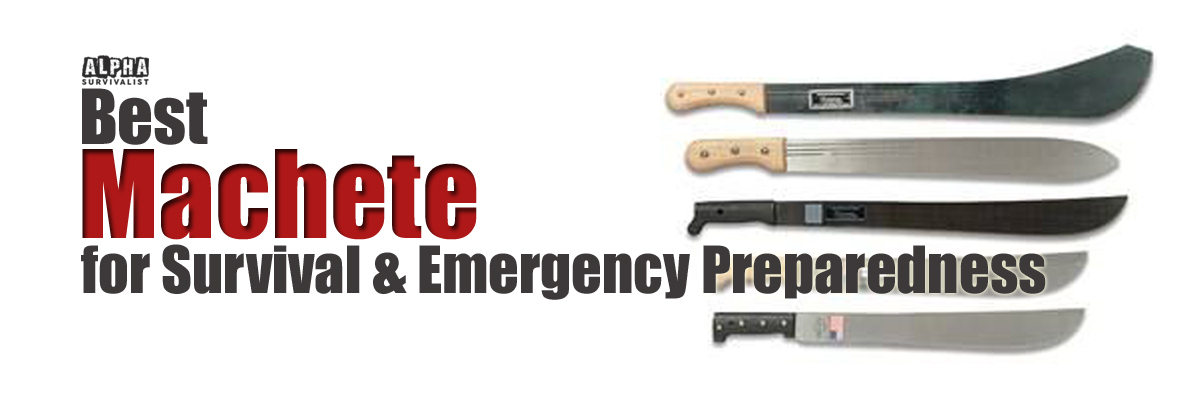The best machete for survival is, above all else, a tool that will be extremely versatile. There are many different styles and variations of the machete, some are better for clearing brush, gathering kindling, or even defending yourself in a crisis. Choosing the right machete from the huge number available depends entirely on what you need your machete to do.
Not all machetes are designed for versatility, a machete that easily slashes through Colombian jungles with ease might bind into the woodier brush of the Philippines for example.
So the questions you need to be asking are:
- Where will you be using your machete?
- What will you be using it for?
Answering these questions will help you select the best machete for your intended use. The right machete.
However, if you just want to know which machetes we deem to be among the best, check out our selection of quality choices below!
What is the Best Machete for Survival in 2024?
There are quite a few really good machetes currently available and quite a lot of poor ones too. Here is a selection of some of the best machetes and a couple to avoid!
| Best Survival Machete | |
|---|---|
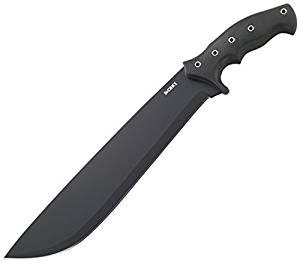 | CRKT ‘Chanceinhell’ Machete
 |
 | KA BAR 2 Kukri
 |
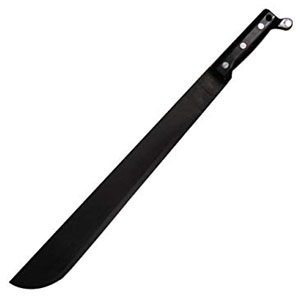 | Ontario Knife Co 18" Military Machete
 |
 | Kershaw Camp 18 - 18" Machete
 |
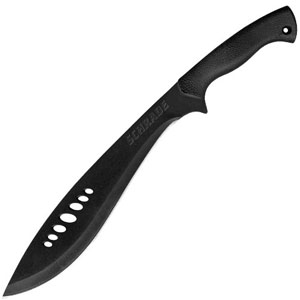 | Schrade SCHKM1 Kukri Machete
 |
 | Condor Golok Parang Machete
 |
| Machetes to Avoid! | |
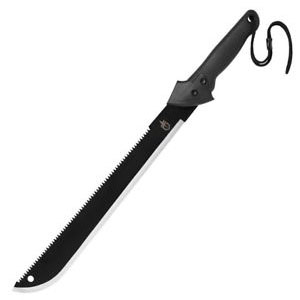 | Gerber Gator 18" Machete
 |
 | SOG SOGfari 18" Machete
 |
Choosing the Best Machete for Survival Purposes?
Your location will dictate the type of machete you will need
When it comes to location, a good rule of thumb is to look at the types of machetes that are popular among the locals. They work in their native foliage every day. The odds are pretty high that they already know which style of machete is best suited to their local environment.
The kinds of vines and soft vegetation you encounter in South America, for example, are most easily cleared with the standard machetes popular in that region. Those machetes excel at slashing.
In Southeast Asia, on the other hand, the thicker brush demands a chopping motion. That’s why the bolo machete from the Philippines is flared out towards the tip. The flaring moves the center of gravity further up the blade to make chopping easier.
The same design principle inspired the parang machete used throughout the Malay archipelago. The parang’s obtuse bevel keeps the blade from binding into the cut.
The people of Indonesia and Singapore have learned to rely on the parang because it’s well-suited to the native vegetation.
Wherever it is you’re headed, you’d do well to take your cues from the people who live and work there every day.
What do you plan on using your machete for?
You should also select a machete based on the specific use you have in mind. The more generalized your machete is, the less effectively it can perform its individual tasks.
The khukuri from Nepal is a great example of that principle.
Often called a kukri in the west, the khukuri is an excellent multipurpose utility knife designed to adapt to any situation.
That compact utility might be exactly what is needed in a survival machete, but a khukuri won’t clear brush like a specifically designed machete and it likely won’t hold up in combat against a tactical machete, either.
Getting the perfect machete for the job can save time, save energy, and could even save your life.
Which materials are best for your machete blade and handle?
Determining where you’ll use your machete and what you’ll use it for will also help you narrow down which materials to seek out and which to avoid.
When it comes to the blade of the machete, your two chief options will be stainless steel and high carbon steel.
High carbon steels are durable and affordable, but they’re rust-prone. Stainless steel won’t rust, but it’s somewhat less durable and it’s more expensive than high carbon steel.
You should consider the humidity, the weather, and the geography of the location where you intend to use your machete.
If you’re unlikely to find yourself traversing wet climates, stainless steel might be an unnecessary precaution. If the limitations of stainless steel are deal breakers for you but you need to move through wet climates, you can prevent rusting in high carbon steel with careful machete maintenance. The application of oil to your machete’s blade can stave off the harmful effects of rust.
Moisture also plays a role in determining the ideal material for your machete’s handle. Wooden handles and plastic handles are inexpensive and reliable, but neither material deals with prolonged exposure to moisture very well. Wooden handles are liable to crack due to moisture and plastic handles might become slippery. You could opt for a pricier material like micarta, which is resistant to the effects of moisture. In dry climates, however, micarta might be an unnecessary expense.
What else should you consider when choosing the best machete for survival?
Other basic considerations include the size and weight of your machete.
Heavier machetes are more efficient to cut with, but you might find yourself longing for a lighter tool on an extended trek.
That same light machete might be the wrong choice for clearing brush on your own property, where the distance traveled is minimal compared to the work you need to do.
Carefully consider how much distance you’re likely to cover with your machete and how frequently you expect to use it before you settle on an ideal weight.
Best Machete for Survival – Health and Safety!
No matter which machete you choose, you’re purchasing a serious tool with serious cutting power. Safety and proper technique are paramount when using a machete. Some of the most important safety measures boil down to plain old common sense.
- Sheath your blade in quality material.
- Never stand within five feet of anybody swinging a machete unless you trust that person’s grip more than you value your own life.
- No matter what you’ve seen on television or in the movies, don’t use your machete barefoot unless you want fewer toes on your feet.
- Always mind the positioning of your legs compared to your swing, too, or else you might end up a few dozen pounds lighter and a good deal shorter than you were before.
Certain aspects of machete technique can be improved with careful practice.
For instance, tightly gripping the handle in a clenched fist forces your arm to do all the work of every chop and slash. Experts prefer a pinch grip on the handle using your thumb and forefinger. This lets momentum, gravity, and the machete’s natural weight do more of your work for you.
All this is so much easier too if you keep your machete sharp so learn how to sharpen a machete correctly.
Lanyard or no lanyard?
Some machete users prefer to loop a lanyard around their wrist to compensate for the looser pinch grip.
Whether or not you use a lanyard is a matter of personal preference. But since that lanyard will swing a dropped machete’s momentum right back towards your groin, the majority of machete users understandably ditch their lanyard attachments.
Either way, you should always wear gloves when using a machete with a pinch grip. This not only provides some protection from the blade but from the callouses and other abrasions your palms might get from rubbing against the machete’s handle. Always an issue when using a looser grip.
Conclusion: Which is the Best Machete for Survival?
If you’ve just read through everything written above you will now realize that picking one machete to perfectly fit everybody’s needs and requirements out of the hundreds available is an extremely difficult task, if not impossible. This is probably the reason why so many preppers and survivalists often own more than one machete because each performs better when carrying out specific jobs.
If carrying more than one machete with your bug out bag, or survival gear, isn’t feasible, as is often the case, then you will need a machete that is equally at home cutting through brush as it is when used as a weapon.
In the opinion of the team here at Alpha Survivalist, the kukri is the machete that fits perfectly into that ‘all-round’ niche and is why we believe it to be the best type of machete for anyone looking for an all-round survival machete.

